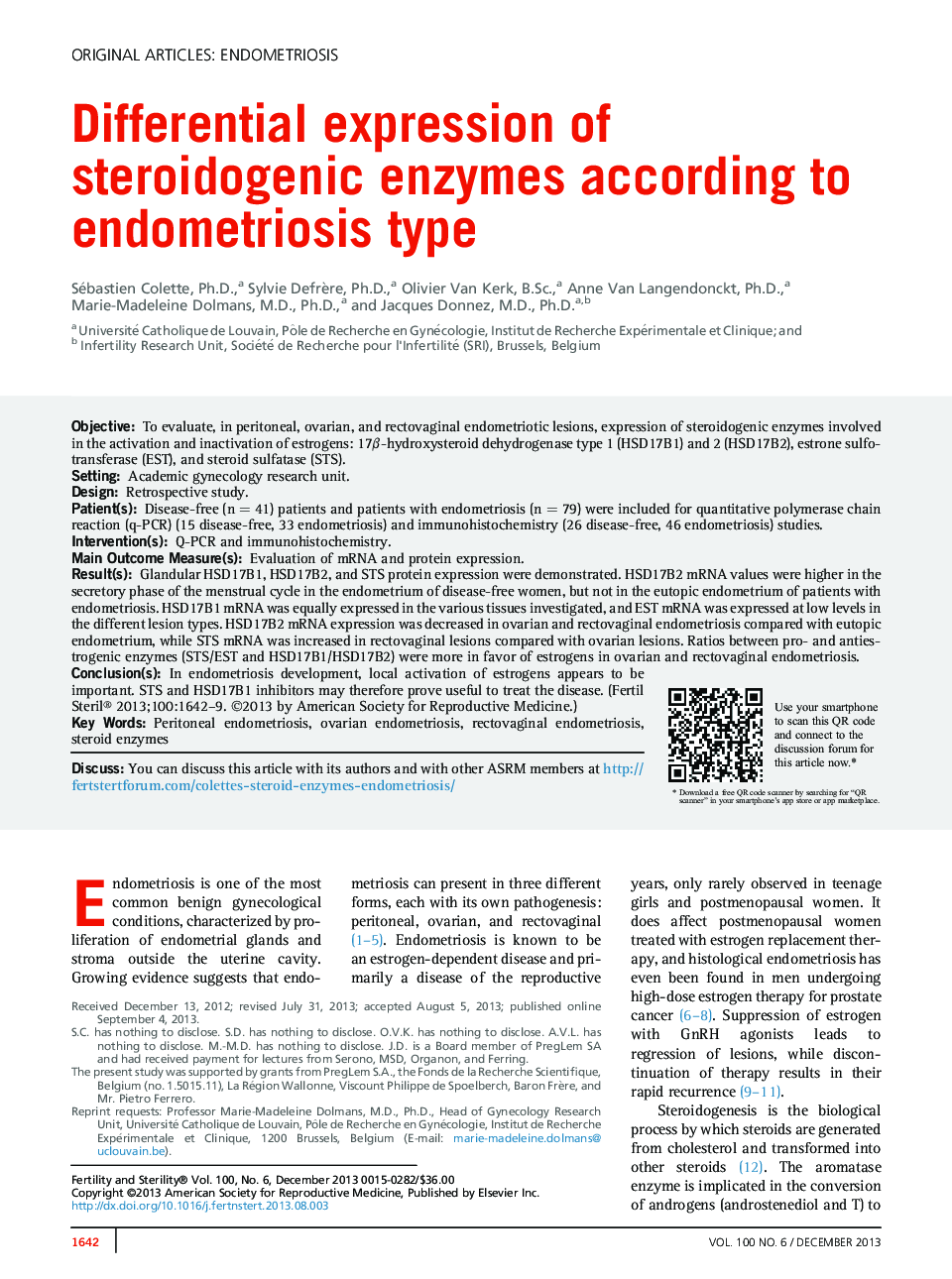| Article ID | Journal | Published Year | Pages | File Type |
|---|---|---|---|---|
| 3938561 | Fertility and Sterility | 2013 | 8 Pages |
ObjectiveTo evaluate, in peritoneal, ovarian, and rectovaginal endometriotic lesions, expression of steroidogenic enzymes involved in the activation and inactivation of estrogens: 17β-hydroxysteroid dehydrogenase type 1 (HSD17B1) and 2 (HSD17B2), estrone sulfotransferase (EST), and steroid sulfatase (STS).SettingAcademic gynecology research unit.DesignRetrospective study.Patient(s)Disease-free (n = 41) patients and patients with endometriosis (n = 79) were included for quantitative polymerase chain reaction (q-PCR) (15 disease-free, 33 endometriosis) and immunohistochemistry (26 disease-free, 46 endometriosis) studies.Intervention(s)Q-PCR and immunohistochemistry.Main Outcome Measure(s)Evaluation of mRNA and protein expression.Result(s)Glandular HSD17B1, HSD17B2, and STS protein expression were demonstrated. HSD17B2 mRNA values were higher in the secretory phase of the menstrual cycle in the endometrium of disease-free women, but not in the eutopic endometrium of patients with endometriosis. HSD17B1 mRNA was equally expressed in the various tissues investigated, and EST mRNA was expressed at low levels in the different lesion types. HSD17B2 mRNA expression was decreased in ovarian and rectovaginal endometriosis compared with eutopic endometrium, while STS mRNA was increased in rectovaginal lesions compared with ovarian lesions. Ratios between pro- and antiestrogenic enzymes (STS/EST and HSD17B1/HSD17B2) were more in favor of estrogens in ovarian and rectovaginal endometriosis.Conclusion(s)In endometriosis development, local activation of estrogens appears to be important. STS and HSD17B1 inhibitors may therefore prove useful to treat the disease.
